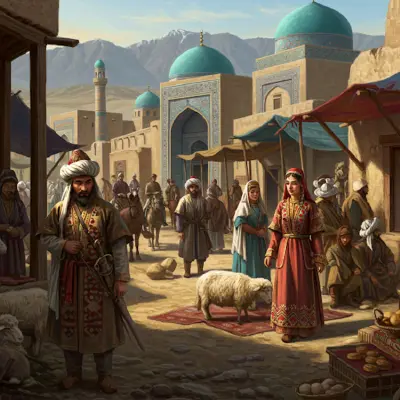Welcome to “Central Asian Ismailis,” a podcast dedicated to exploring the rich history, culture, and religious traditions of the Ismaili community in Central Asia, with a special focus on the Badakhshan region. In this podcast, we delve into a detailed bibliography of Ismailis in Central Asia, drawing from academic works, PhD dissertations, encyclopedic entries, and collected articles by historians and researchers—both Western and from Russia and the Soviet era.
Through our discussions, we uncover key historical periods, from the early spread of Ismailism to the Alamut era, the post-Alamut role of pirs, and the Soviet and post-Soviet experiences of the community. We’ll also highlight influential figures like Nasir-i Khusraw and examine how Ismailis have navigated shifting political landscapes, preserved their theological doctrines, and maintained their social structures.
Join us as we explore the manuscript traditions, cultural interactions, and resilience of the Ismailis in Central Asia, shedding light on their enduring legacy in the region.
Timeline
-9th–10th Centuries:
Revival of Ismaili da’wa under Nizari Imams, spreading from western Persia (Jibal) to Khurasan and Nishapur. Key figures like Khalaf al-Hallaj, Abu ‘Abd Allah al-Khadim, Ghiyath, and Abu Sa’id al-Sha’rani drive early conversions and military support, extending the da’wa to regions including Badakhshan.-10th Century:
Ismailism gains prominence under Samanid ruler Nasr b. Ahmad, converted by Muhammad b. Ahmad al-Nasafi, while facing strong opposition from Sunni elites and Turkish military forces. The decline of the Samanids paves the way for Turkish nomads and the gradual establishment of an Ismaili spiritual hierarchy.- 11th Century:
Nasir-i Khusraw emerges as a key intellectual and spiritual authority in Khurasan. Despite widespread Ismaili influence in Badakhshan, official condemnation from ruling powers intensifies.- 14th–16th Centuries:
The Timurids annex parts of Badakhshan, ending its long-standing independence, while pirs produce significant doctrinal literature. In the mid-15th century, figures like Khayrkhwah-i Harati become prominent, and later, regional conflicts continue under Timurid and Uzbek influences.- 17th–19th Centuries:
Early in the 17th century, remote areas of Badakhshan maintain a degree of independence until dynastic control by Mir Yari beg Khan. The 18th century sees regional struggles for autonomy, while the 19th century is marked by Afghan invasions, Russian expansion, and the strategic rivalry of the Great Game, reshaping borders and local governance.- 20th Century:
The Ismaili legacy endures through periods of Russian exploration, manuscript discoveries, and Soviet-era political shifts, including movements like the Panjebhai in Tajik Badakhshan. Key historical texts are edited and published, preserving the region’s rich cultural and religious heritage.- 21st Century:
Modern scholarship continues to explore and reinterpret the history and traditions of Central Asian Ismailis, contributing new insights and translations of classic works.